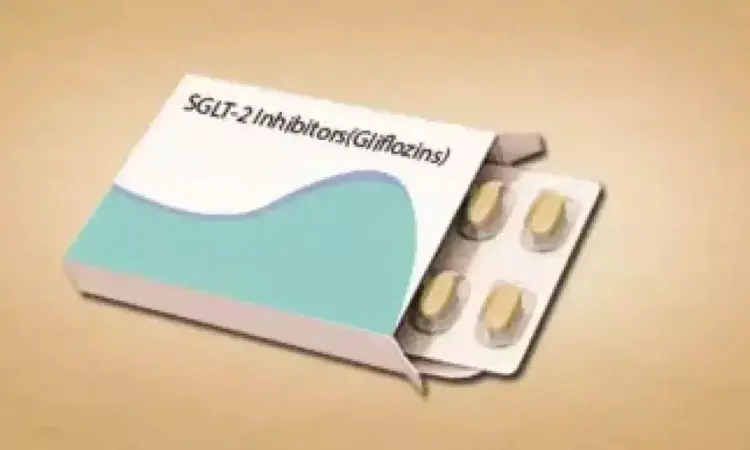- Home
- Medical news & Guidelines
- Anesthesiology
- Cardiology and CTVS
- Critical Care
- Dentistry
- Dermatology
- Diabetes and Endocrinology
- ENT
- Gastroenterology
- Medicine
- Nephrology
- Neurology
- Obstretics-Gynaecology
- Oncology
- Ophthalmology
- Orthopaedics
- Pediatrics-Neonatology
- Psychiatry
- Pulmonology
- Radiology
- Surgery
- Urology
- Laboratory Medicine
- Diet
- Nursing
- Paramedical
- Physiotherapy
- Health news
- Fact Check
- Bone Health Fact Check
- Brain Health Fact Check
- Cancer Related Fact Check
- Child Care Fact Check
- Dental and oral health fact check
- Diabetes and metabolic health fact check
- Diet and Nutrition Fact Check
- Eye and ENT Care Fact Check
- Fitness fact check
- Gut health fact check
- Heart health fact check
- Kidney health fact check
- Medical education fact check
- Men's health fact check
- Respiratory fact check
- Skin and hair care fact check
- Vaccine and Immunization fact check
- Women's health fact check
- AYUSH
- State News
- Andaman and Nicobar Islands
- Andhra Pradesh
- Arunachal Pradesh
- Assam
- Bihar
- Chandigarh
- Chattisgarh
- Dadra and Nagar Haveli
- Daman and Diu
- Delhi
- Goa
- Gujarat
- Haryana
- Himachal Pradesh
- Jammu & Kashmir
- Jharkhand
- Karnataka
- Kerala
- Ladakh
- Lakshadweep
- Madhya Pradesh
- Maharashtra
- Manipur
- Meghalaya
- Mizoram
- Nagaland
- Odisha
- Puducherry
- Punjab
- Rajasthan
- Sikkim
- Tamil Nadu
- Telangana
- Tripura
- Uttar Pradesh
- Uttrakhand
- West Bengal
- Medical Education
- Industry
Among diabetes patients, SGLT2 inhibitors less likely to cause gout compared to sulfonylureas: JAMA

USA: The use of SGLT2 inhibitors versus sulfonylureas was associated with a lower risk of incident gout, heart failure (HF), and major adverse cardiovascular events (MACEs), and lower rates of recurrent flares in a population-based cohort study of 34 064 adults with type 2 diabetes (T2D). The study findings were published online in JAMA Internal Medicine on April 15, 2024.
"The gout and cardiovascular benefits associated with sodium-glucose cotransporter-2 inhibitors (SGLT2i) in these target trial emulations may guide the selection of glucose-lowering therapy in type 2 diabetes patients, at risk for or with gout," the researchers wrote.
Gout, characterized by recurrent attacks of inflammatory arthritis, stands as a formidable challenge for individuals grappling with type 2 diabetes. The intricate interplay between metabolic dysregulation, insulin resistance, and purine metabolism sets the stage for elevated uric acid levels, predisposing diabetic patients to gout flares. Against this backdrop, pharmacotherapeutic interventions assume pivotal significance in mitigating gout risk while navigating the complexities of diabetes management.
SGLT-2 inhibitors, hailed for their pleiotropic benefits beyond glycemic control, have emerged as promising candidates in the armamentarium of diabetes therapeutics. Their unique mechanism of action, which involves inhibiting renal glucose reabsorption, culminates in glycosuria-mediated uric acid excretion, thus ostensibly conferring a protective effect against gout. On the other hand, sulfonylureas, the most common second-line glucose-lowering therapy exert their antidiabetic effects by stimulating insulin secretion, albeit with potential adverse metabolic consequences, including weight gain and hyperinsulinemia, which could exacerbate gout risk.
In diabetes management, the quest for optimal pharmacotherapy extends beyond glycemic control to encompass multifaceted considerations, including cardiovascular risk mitigation and comorbidity management.
Against the above background, Natalie McCormick, The Mongan Institute, Department of Medicine, Massachusetts General Hospital, Boston, and colleagues aimed to compare incident gout risk and recurrent flares rate between patients with type 2 diabetes initiating SGLT2i versus sulfonylurea when added to metformin monotherapy.
For this purpose, the researchers conducted a sequential, propensity score-matched, new-user comparative effectiveness study using a target trial emulation framework including adults with T2D receiving metformin monotherapy in a Canadian general population database from 2014 to 2022.
The primary outcome was a diagnosis of incident gout, ascertained by emergency department (ED), hospital, outpatient, and medication dispensing records. Secondary outcomes included gout-primary hospitalizations, ED visits, and MACE, as well as recurrent flare rates among prevalent gout patients.
HF hospitalization was assessed as a positive control outcome and osteoarthritis encounters as a negative control. For target trial emulations, the researchers used Poisson regressions and Cox proportional hazards with 1:1 propensity score matching (primary analysis) and overlap weighting (sensitivity analysis).
Following were the study’s key findings:
- Among 34 604 propensity score matched adults with T2D initiating SGLT2i or sulfonylurea (60% male, mean age, 60 years), incidence of gout was lower among SGLT2i initiators (4.27 events per 1000 person-years) than sulfonylurea initiators (6.91 events per 1000 person-years), with a hazard ratio (HR) of 0.62 and a rate difference (RD) of −2.64 per 1000 person-years.
- Associations persisted regardless of sex, age, or baseline diuretic use.
- SGLT2i use was also associated with fewer recurrent flares among gout patients (rate ratio, 0.67 and RD, −20.9 per 1000 person-years).
- HR and RD for MACE associated with SGLT2i use were 0.87 and −3.58 per 1000 person-years.
- For control outcomes, SGLT2i users had a lower risk of HF (HR, 0.53), as expected, with no difference in osteoarthritis (HR, 1.11).
- Results were similar when applying propensity score overlap weighting.
In conclusion, in this population-based cohort study, the gout and CV benefits associated with SGLT2 inhibitors in these target trial emulations may guide the selection of glucose-lowering therapy in patients with T2D, at risk for or already with gout.
Reference:
McCormick N, Yokose C, Lu N, et al. Sodium-Glucose Cotransporter-2 Inhibitors vs Sulfonylureas for Gout Prevention Among Patients With Type 2 Diabetes Receiving Metformin. JAMA Intern Med. Published online April 15, 2024. doi:10.1001/jamainternmed.2024.0376
Dr Kamal Kant Kohli-MBBS, DTCD- a chest specialist with more than 30 years of practice and a flair for writing clinical articles, Dr Kamal Kant Kohli joined Medical Dialogues as a Chief Editor of Medical News. Besides writing articles, as an editor, he proofreads and verifies all the medical content published on Medical Dialogues including those coming from journals, studies,medical conferences,guidelines etc. Email: drkohli@medicaldialogues.in. Contact no. 011-43720751


